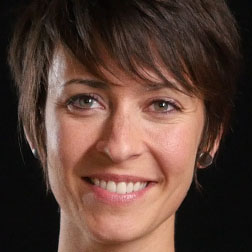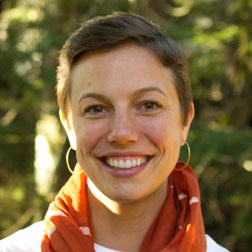“Let’s have a working lunch so we can make sure to get through all the content.”
When a client says something like that to me, I experience contraction and agitation. Why? Because this frame places a premium on the “content” (or the “it”). I am now simply a “content” dispenser and the groups I’m working with are passive consumers. I momentarily imagine myself sitting in front of the group reading aloud from a large book.
All of this runs counter to my real experience with groups, which looks a lot more like mud wrestling: Unpredictable, messy, ungraspable, and completely engrossing.
Over time, my contractions and agitation grew, and so did my judgments. Why were my clients stuck on such mechanistic ideas? Why were they so driven and action-focused? Why did they want all the answers? Finally, why couldn’t they see that not everything could be planned?
As a leader who initially grew up inside of these systems, I was actively struggling with how to be helpful within them. As I started to move beyond (but not fully transcend) some of these mental models, ideas, and ways of being, I became quite intolerant and insensitive. How dare they think about this process of mud wrestling as merely “getting through content”?
Clearly there were gaps between my expectations and theirs, both in terms of what we were doing, and how to relate to each other. The big ‘Aha’ that came to me was that this reactive and rejecting mindset negatively impacted my ability to work with groups.
So, what to do? At first I thought I needed to change my circumstances. Suddenly I wanted to work with groups who “got it.” Then I could talk about energy, and awareness, and design experiments we could do together (insert hearts and rainbows here) and I could stop “bottom lining” and “power posing.” I wanted to get out of the belly of the beast.
Then along came Diane Musho Hamilton. On the first day of my final Integral Facilitator intensive, she and I found ourselves together at the sink in the Ladies room. I said something about my work on Wall Street (and getting ready to move into an apartment there) and she said, in her charmingly casual, yet disarmingly incisive way, “Wall Street–that’s great! What a beautiful place for you to be working.” (Insert head swivel here) – WHAT?
Throughout the intensive, Diane was able to help me really see what Ken Wilber’s concept of “Transcend and Include” was really all about. I was so busy “transcending” that I had forgotten to include (and value) those aspects of myself that served me well (and still do) in my day-to-day life.
What’s beautiful about trying to reach the bottom line? What’s beautiful about our ability to get things done?
Well, actually…a lot!
As I worked to include and honor these parts of myself, I’m now able to relax and honor these same parts in those with whom I am working. Disowning my own “strive-drive” meant I was disowning the same in others. As I embrace and include my “strive-drive” I’m free from its bondage and am able to work with groups in a more liberated and open way.
I notice that this embrace seems to earn me far greater energetic permission to help uncover areas that are on the horizon and discoverable–much more so than my rejecting and resisting energy had ever achieved.
What I’ve been working with is how to best serve a group in the most dynamic and responsive ways possible. Yet, I’m also honoring and working with ingrained cultural norms and ways of being that rely on and expect things like: timed agendas with detailed notes as to what will happen within each session (which were prepared days or even weeks before the session is held and shared in advance with the group), a content orientation in which a more passive/receptive participant model is expected, and objective ways of tackling challenges (i.e., the problem is “out there”).
Here are some moves I’ve captured that work for me:
- I facilitate an exercise early on in the first session that is emergent (i.e., happening right now), has easy rules of engagement (so no one feels incompetent), and includes differences. A simple one I use is called “straight lines”. I ask the group to form a line that orders individuals according to superficial differences like height, tenure with the organization, tenure in their role, birth month or day, or country they are from in alphabetical order. It gets the group interacting and working together and brings laughter, energy and movement into the room. It also encourages them to create something together that is happening right now, and that the final “product” is purely a function of who is present. I usually participate in this exercise wherever possible.
- I provide session roadmaps that use questions instead of topics, so instead of: ‘Understanding my Myers Briggs Type’, I create a question: ‘What is my Myers Briggs Type and how is this useful to me?’
- I use group “check-ins” and “check-outs”. To warm up groups in the beginning, I ask for one thing they are curious about as we start the day. It’s possible over time to deepen the questions as the members grow in their comfort with self-disclosure and expressing feeling states.
- I create group agreements at the start of the process, refer to them throughout the session and notice/offer appreciation when people are honoring them.
- Whenever an individual shares a viewpoint or experience and inhabits a third person perspective, I intervene by asking them to modify it to a “we” or an “I” and see how that shifts how they relate to the topic or discussion. In other words, I find every opportunity I can to move individuals from an ‘it’ orientation to an ‘I’ orientation, which increases the subjectivity of the group and therefore the implications for change and action.
- I ask for permission to try something different, or get permission to experiment and see what happens. For example, if I’m working with a group of leaders to develop coaching skills and someone starts to describe a situation that seems relatable to the group, I ask if they are willing to work with me in the moment with me as the coach. In this way, I am modeling spontaneity and a willingness to try something that doesn’t have a pre-determined or guaranteed outcome, which helps others take those risks too.
What about you? What do you value about earlier aspects of your personal or professional life? What are some ways you are ‘transcending and including’ them today as a facilitator or leader?
Amy Pasquale is a Certified Integral Facilitator, Executive Coach and Organizational Development Consultant. As the founder of Green Mesa Consulting she uses her practical experience as a business leader and training in organizational psychology to support behavioral change that allows leaders to grow and thrive.




7 thoughts on “Leveraging Our Past”
BRAVA Amy. Very helpful thoughts and ideas. Thank you.
Thank you Jane!!
Great posting, Amy. I just spent 15 minutes on a written response which seems to have gotten lost in cyberspace (ugh!). Maybe I’ll get inspired to re-create it as I had a couple of questions/comments. In the meantime, it’s great to connect with you again, even through it’s at a bit of a distance. Cheers! JD
thanks so much JD – we are definitely in need of a catch up – I’ll message you on FB!
Hi, this is a very helpful post – and thank you for the concrete suggestions. It made me think about Improv and the invitation to “yes, and” instead of but or no. That we can build on each other’s thoughts, experiences etc.
Oh so thoughtful Ruthy! I’m truly delighted that my words resonated! I hadn’t thought of the improv idea as another way to conceive of this – totally ! And thank you for that!
Loved the question-based roadmaps! Definitely gets the juices flowing and people thinking. I appreciate the mindset shift to stop fighting in the belly of the beast and swim against the current. Great insights into how to provide insight and help with development within the cultural and mindsets currently present. Change is definitely possible, but doesn’t occur in a single session. Thanks Amy – as always, love learning from your pearls of wisdom.